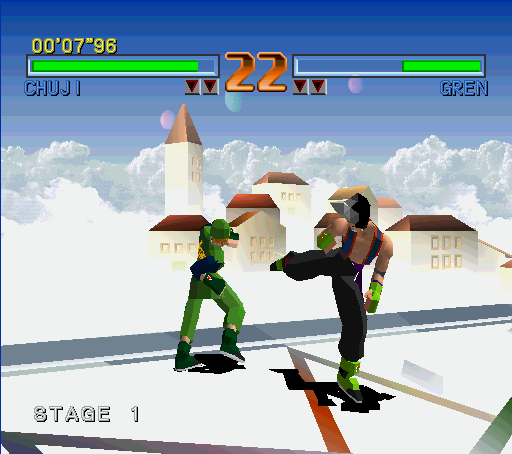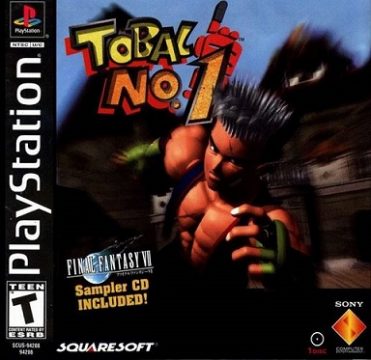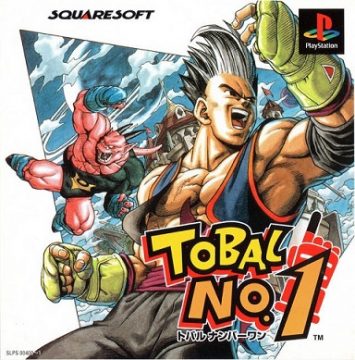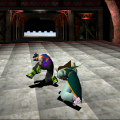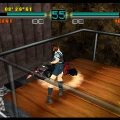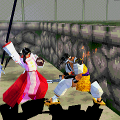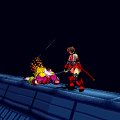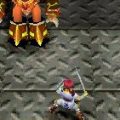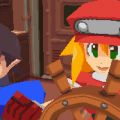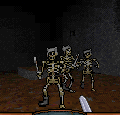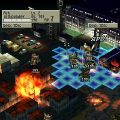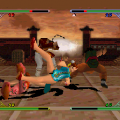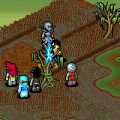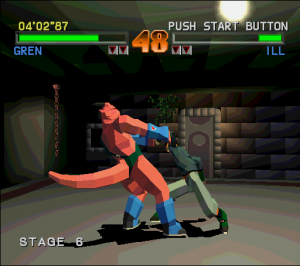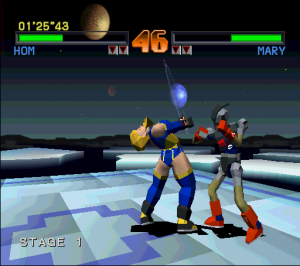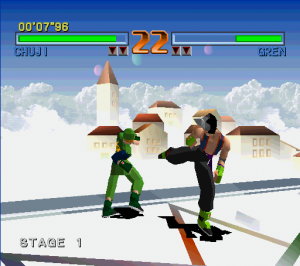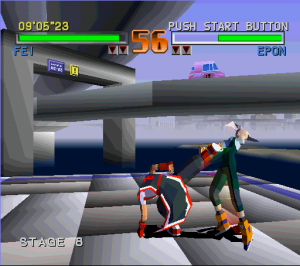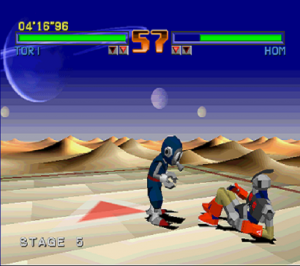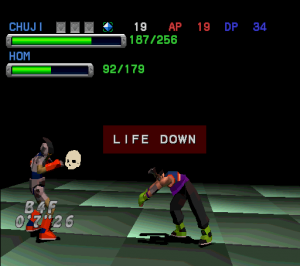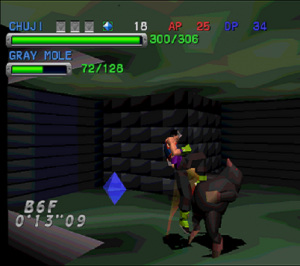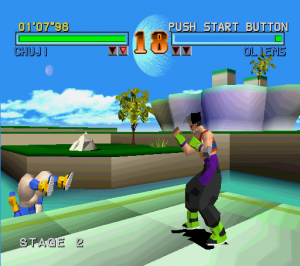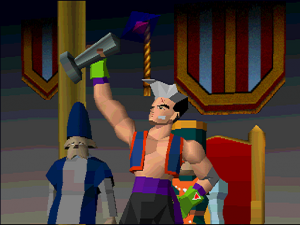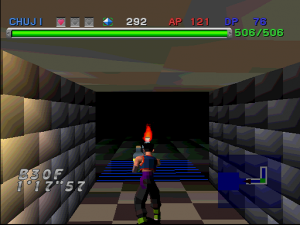It’s hard to overstate how much influence the team behind the original Virtua Fighter has had in the field of 3D fighters. Shortly after its completion, two of its key members, game designer Seiichi Ishii and character designer Kunihiko Nakata, left Sega’s AM2 for Namco. There, Ishii would become the main designer and director for the first two Tekken games, while Nakata would create some of the series’ most iconic characters. It’s a bit as if Kouichi Nakamura and Akira Toriyama, after helping create Dragon Quest, had joined Squaresoft and made Final Fantasy. But the story doesn’t end there. Apparently still unsatisfied with his job, Ishii then quit Namco, taking a good portion of the Tekken team with him. Along with another half dozen transfers from the Virtua Fighter team, including lead programmer Toru Ikebuchi, and with Squaresoft’s support, they formed a new company: Dream Factory.
Character designer Nakata, meanwhile, went to Lightweight, another new developer with ties to Square, where he would graduate to Director of the Bushido Blade games. For Dream Factory’s first release, Tobal No. 1, Square brought in the aforementioned Akira Toriyama to design the characters instead, following his work on their classic RPG Chrono Trigger. Quirky, sometimes goofy, and not always humans, they are representative of the kind of characters he preferred to draw when he had the freedom to do so.
Characters
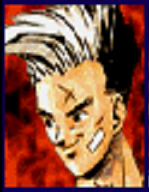
Chuji
Born on Earth, he emigrated to planet Tobal where he’s now employed as a miner. Following the 98th tournament, the Kutz Foundation has been buying up mines left and right and exploiting its workers. He hopes to defeat his rival Gren to put an end to these practices.
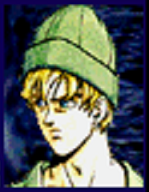
Gren Kuts
The young heir to a financial empire known as the Kuts Foundation, he lives in London where he’s a great boxing champion. Canonical winner of the 98th tournament, he enters the 99th to check up on distressing rumors concerning the foundation’s activities on Tobal.
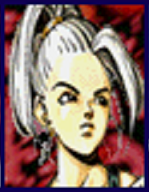
Epon
Though she’s grown to be headstrong and a bit of a tomboy, she was once a sickly child. Her father fought in the tournament in hopes of buying medication with the prize money, but was banned for his overly brutal style. She’s out to clear her family name.
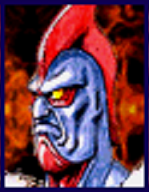
Oliems
His mentor, champion of the war-like Kentuckians (Kentakku-jin), was defeated by Epon’s father in a previous tournament, bringing ridicule upon his people. He fights to restore his people’s reputation and avenge his master.
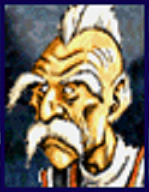
Fei
An old kung-fu master, he is the only one to have defeated Emperor Udan, back at the 66th Tournament. He used the Royal Stone he was awarded to fix a mining robot named Homs and took it as a student, but the Stone’s power has been weakening. He hopes to obtain another and restore Homs.
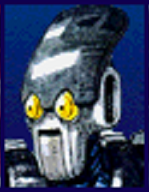
Homs
Fei’s student and robot, he shares some of his moves but also benefits from extensible limbs. He believes his master responsible for his recent power outages and enters the tournament to get the Royal Stone for himself.
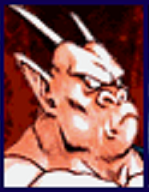
Ill Goga
This love-stricken devil participated in the 98th tournament in order to buy his lover a nose ring with the prize money. Left in the dust after his humiliating defeat at the hands of Gren, he hopes to regain her heart with a victory.

Mary Ivonskaya
A great wrestling champion and mother of a little girl back on Earth, this huge Russian woman finds herself in financial trouble since other wrestlers no longer want to risk fighting her. She’s after money, and is a rival of Gren’s.
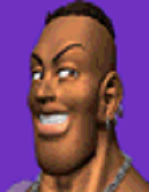
Doctor V
A medical doctor of great renown, he grew frustrated with the limits of modern technology. Upon reading of a stone with amazing properties in some ancient texts, he joins the tournament to research the Royal Stone handed as a prize. Appears in Tobal 2.
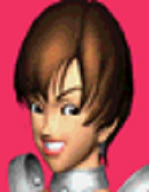
Chaco
A Galaxy Patrol agent sent to investigate the Kuts Foundation’s actions on Tobal, she’s also developed a crush on Gren. She is fast and fights in a strange, somewhat goofy style. Joins the cast in Tobal 2.
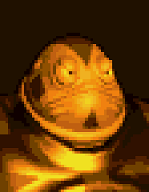
Mufu
A mysterious being from a faraway jungle planet who speaks a language no one else understands, he resembles a robot with a plump body and long, thin legs. He was recruited by Udan to weaken the competition. Unlockable in both games.
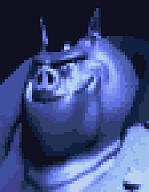
Nork
A fat, simple-minded being with a snout like a pig’s, he fights under Udan, who’s greatly increased his size in order to take advantage of the Ring-Out rule. A much smaller version named Snork can be unlocked in the first game, while the full-sized version can be unlocked in Tobal 2.
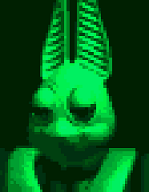
Emperor Udan
Ruler of planet Tobal and presumably very, very old, he’s a small, rabbit-like being of unknown origins. As per Toriyama logic, his puny appearance makes him a powerhouse. He likes to charge at his opponents’ legs and mix it up with all kinds of jumps and flips. Unlockable in both games.

Mark
A demon king recently released from his ancient seal. He’s the main antagonist in Tobal 2‘s Quest Mode and his two forms become playable after you defeat them. Unlike most Quest Mode monsters, his moveset is comparable to the main characters’.
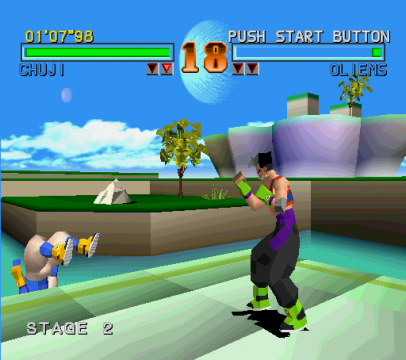
At some point in the future, a mineral known as Molmoran, unique to planet Tobal, becomes highly sought after for its energetic properties. Governments all across the galaxy begin to pressure its ruler, Emperor Udan, to obtain mining rights. In order to placate them, he announces he will organize a martial arts tournament every 200 days, whose winner will be permitted to operate mines on his planet. The catch is that he, a great martial artist, also participates. As the 98th Tobal No. 1 tournament is about to begin, only one man has managed to defeat him…
One of the core concepts established by Virtua Fighter is that attacking and blocking are divided into three levels of height; high attacks can either be blocked high or ducked under, low attacks must be blocked low or jumped over, and mid attacks exist to break open a crouching opponent’s defense. While most 3D fighters reprise that basic idea, Tobal No. 1 is entirely set up around it; the Triangle button hits high, Square mid and X low, creating a logical feel to the controls. Blocking is assigned to the right shoulder button, and while holding it you can perform stronger but slower attacks. There’s a lot of flipping and spinning around, but the moves are still relatively realistic by fighting game standards, and the inputs are never more complicated than pressing a direction twice followed by an attack button, eschewing diagonals entirely.
The most complex aspect is the grappling system, almost that of a wrestling game. Grabbing an opponent opens up multiple offensive and defensive options. You can go for a throw right away, but the opponent can escape it with precise timing, which often puts them in a dominant position. You can hit them high or low; they can block either. You can also push or pull them in all four directions, while they can resist by tapping the opposite direction. If you’re successful in moving them, however, you can go into an unescapable throw. In addition to causing a fair deal of damage, grappling is instrumental in getting your opponent off the ring, securing instant victory.
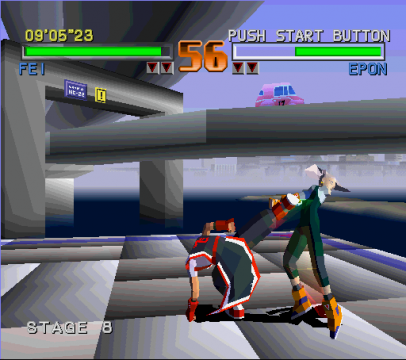
Apart from the obscure Dark Edge, Tobal was the first 3D fighter to allow you to circle around your opponent freely, serving as a means of escape and counterattack and adding a new dimension to the Ring Out mechanic.
In some ways, however, Tobal‘s status as the first of its series is quite apparent. The movesets are limited, and the game is somewhat slow. Combined with the fact that the grappling system is shared by all, it makes the characters feel a little too similar to each other. While this simplicity has a charm of its own, it’s hard to go back to it after getting used to the more complex sequel.
Where the game endures, however, is in its aesthetics. While the character models are un-textured, the game runs at 60 fps and at a higher resolution than was usual. Technical details aside, what really stands out is the backgrounds. The tournament takes place across vastly different lands, both from each other and from what we are used to seeing. You may find yourself standing on an iceberg amidst a dark sea, or on a glass platform among the clouds, with windmills the color of exotic fruits to one side and a village that either floats or stands atop the highest mountain on the other; then underneath a graffiti-covered overpass in a modern city, or in an ancient temple devoted to some foreign Gods. From most of those places, you can see a sky filled with stars and planets, even on the brightest day. There’s something about the way those totem-like characters perform their acrobatic moves in that oddly leisurely way that contributes to this atmosphere, as if they were all fighting within the shared dream of a strange universe.
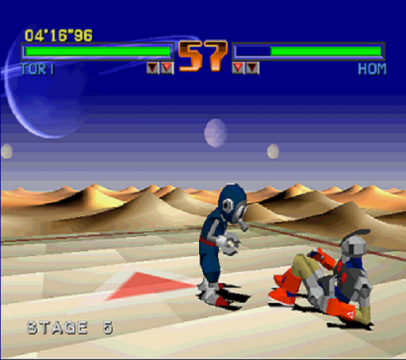
The music, too, is worthy of attention. At the time of Tobal‘s development, Dream Factory had yet to hire a composer, so Squaresoft spread the soundtrack among eight of its own, most of them lesser-known or recent hires. The famous exception is Yasunori Matsuda, who’d recently made a name for himself with his now-classic work on Chrono Trigger; unsurprisingly, he contributes the most atmospheric and evocative themes here. The overall result is unequal and eclectic, but also quite interesting, with a number of memorable tracks.
Since versus fighters had risen to popularity five years earlier, they had essentially been a two-player experience. You could practice on your own or play against the computer, but unless the AI was especially good at adapting to different play styles (which isn’t the case here), it would rapidly become boring. Tobal‘s Quest Mode was the genre’s first substantial attempt at creating a durable single-player experience, transposing its battle mechanics into the framework of a dungeon crawler.
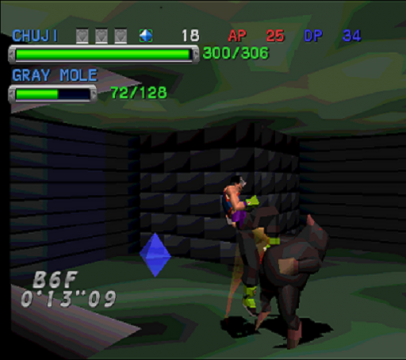
Upon choosing your character, you’re taken to a hub from which you may enter five dungeons, though only the Practice Dungeon is initially available. The first thing you’ll notice is that the controls are somewhat cumbersome; since the fighters always remain in their fighting stance, you have to hold R and tap a direction to perform a 90 degree turn, then tap forward twice to run. It’s easy enough to get used to, but the occasional platforming remains a problem throughout. Enemies appear as flames from a distance and stay in their spot until you confront them. They’re mostly animals and stock fantasy creatures, fought one-on-one, and it’s pretty amusing to see giant rats and dragons standing on two feet and using martial arts moves. You can find food to restore your health or increase your stats, unidentified potions with varying effects and even shops, represented as geometric shapes on the ground. The currency is Molmoran Stones, found hovering throughout the corridors you traverse. Sometimes shops are contained within capsules, like those that transport houses and vehicles in Dragon Ball. You can only carry two items at once, though anything left behind can be retrieved later.
The first four dungeons have a set design and feature multiple floors, obstacles and basic puzzles, along with an handy auto-mapping feature. Apart from the Practice Dungeon, each ends with a battle against one of the bosses from the Arcade Mode, who becomes playable once defeated.
Though they can be challenging to complete, they’re all on the short side. The real meat of Quest Mode is Udan’s Dungeon, 30 floors deep and partially randomly-generated. It introduces new types of items, such as balances that double another item’s effect, skulls that can be used as projectiles and most importantly, pots that can hold up to five items. It’s divided between normal floors, guarded by common monsters, and boss floors where you either fight one of the main characters or a unique monster. On the final floor awaits Toriyama Robo, the small, primate-like robot which sometimes appear in Akira Toriyama’s manga as his avatar.
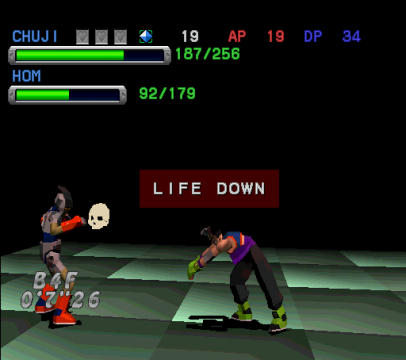
To reach him, you’ll have to increase your stats as much as possible and learn how to beat the different monster types. Attack is raised by eating small pieces of meat, while defense only goes up if you eat the larger pieces while your health is already full. There are also heart symbols on some floors; if you step on one of those with full health, you gain an extra heart (essentially a life), but your current HP goes down to 1, so you have to be able to restore it right away, lest you waste the life you just gained.
Many important items always appear on the same floors, so it’s possible to make plans; combined with the elaborate battle system, it creates a sense of fairness and steady progress absent in typical roguelikes. It’s also fast-paced, and a successful run takes just over an hour to complete; like an old-school action game, its durability stems from the challenge it puts forth.
For many die-hard Squaresoft fans, Tobal is also remembered as the game that came with the first playable demo for Final Fantasy VII.
